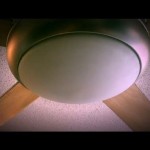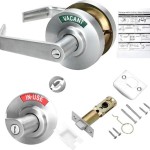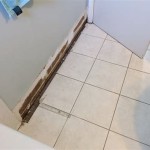How To Remove Bathroom Safety Bars
Bathroom safety bars provide crucial support and stability for individuals with mobility challenges. However, there may come a time when removal becomes necessary, whether for replacement, renovations, or changing needs. Removing these bars safely and correctly is essential to prevent damage to the surrounding walls and ensure the individual's safety during the process.
1. Assessing the Installation Type
Before initiating the removal process, it is vital to identify the type of installation used for the safety bars. Generally, these bars are secured using either flanges with concealed mounting screws or flanges with visible mounting screws. Understanding the specific installation method dictates the required tools and techniques.
For concealed screw installations, locating the small access panels or covers on the flanges is the first step. These covers often blend seamlessly with the flange design and may require careful examination to identify. They can typically be removed by gently prying them open with a flathead screwdriver or similar tool.
Visible screw installations, on the other hand, present a more straightforward approach. The screws securing the flanges to the wall are readily accessible, simplifying the removal process. Determining the type of screws used, whether Phillips head, slotted, or another variety, will inform the choice of appropriate screwdriver.
2. Gathering the Necessary Tools
Having the correct tools assembled beforehand streamlines the removal process and minimizes potential complications. The tools required depend on the installation type identified in the previous step. For both concealed and visible screw installations, a suitable screwdriver is paramount.
Concealed screw installations may require a small flathead screwdriver or similar tool for prying open access covers. For visible screw installations, the appropriate screwdriver, whether Phillips head, slotted, or another variety, is necessary. Additionally, a drill with a screw extractor bit might be helpful for removing stripped or damaged screws.
Other potentially beneficial tools include a stud finder, to locate wall studs behind the tile or wallboard, and safety glasses to protect the eyes from debris during the removal process. A utility knife can be useful for carefully scoring around the flange to break any caulk or sealant that might be holding it in place.
3. Removing the Safety Bars
Once the installation type has been determined and the necessary tools gathered, the actual removal process can begin. For concealed screw installations, carefully pry open the access covers on the flanges using a flathead screwdriver. Once the screws are exposed, use the appropriate screwdriver to unscrew them, taking care not to damage the surrounding wall surface.
For visible screw installations, the process is more direct. Use the appropriate screwdriver to remove the screws securing the flanges to the wall. If the screws are stripped or damaged, a screw extractor bit attached to a drill can be used to remove them. Apply steady pressure to avoid further damage.
After all screws are removed, carefully pull the flanges away from the wall. If caulk or sealant was used during installation, a utility knife can be employed to score around the flange, helping to break the seal. Once the flanges are removed, the safety bars can be detached.
If adhesive was used in addition to screws, a solvent appropriate for the type of adhesive may be required to loosen the bond. Follow the manufacturer’s instructions for safe and effective adhesive removal. Gently work the flange loose, taking care to avoid damaging the surrounding wall surface.
4. Addressing Wall Damage and Preparing for Reinstallation or Repair
Once the safety bars have been removed, inspect the wall for any damage. Small holes left by screws can often be filled with spackle or similar filler. Larger holes or damage may require patching. If the area requires repainting, ensure the patched areas are properly primed before painting.
If new safety bars are being installed, ensure the new installation meets the individual’s needs and the relevant safety standards. Consider the user’s weight, height, and specific requirements when choosing and installing replacement bars. Professional installation is recommended to ensure the bars are securely fastened and can provide the necessary support.
If the removal is part of a larger renovation project, the removed safety bars may be reinstalled after the renovations are complete. Alternatively, new safety bars can be installed to complement the renovated space and meet the individual’s current needs. Careful planning and consideration of user requirements are essential in ensuring the safety and functionality of the bathroom environment.

Grab Bar Removal Instructions Hunker Bars Aging In Place Bathroom Safety

How To Remove Grab Bars Ehow

Should We Remove Grab Bars From The Bathroom Before Trying To New York Times

Shower Bar How To Install Bathroom Grab Bars Diy Family Handyman

How To Install Grab Bars The Home Depot

Bath Shower Grip Handle Bathroom Suction Grab Bar Safety Rail Tub Support Sucker Armest Joom

How To Install Grab Bars The Home Depot

Shower Handle No Drill Grab Bars Non Slip Safety Hand Rail Removal Suction Cup Bar Strong Bath Balance 110kg Weight Capacity For Seniors Elderly Bathroom

Proper Shower Grab Bar Placement Keeps Your Family Safe Improveit

How To Improve Bathroom Safety For Seniors Bath Fitter
Related Posts







